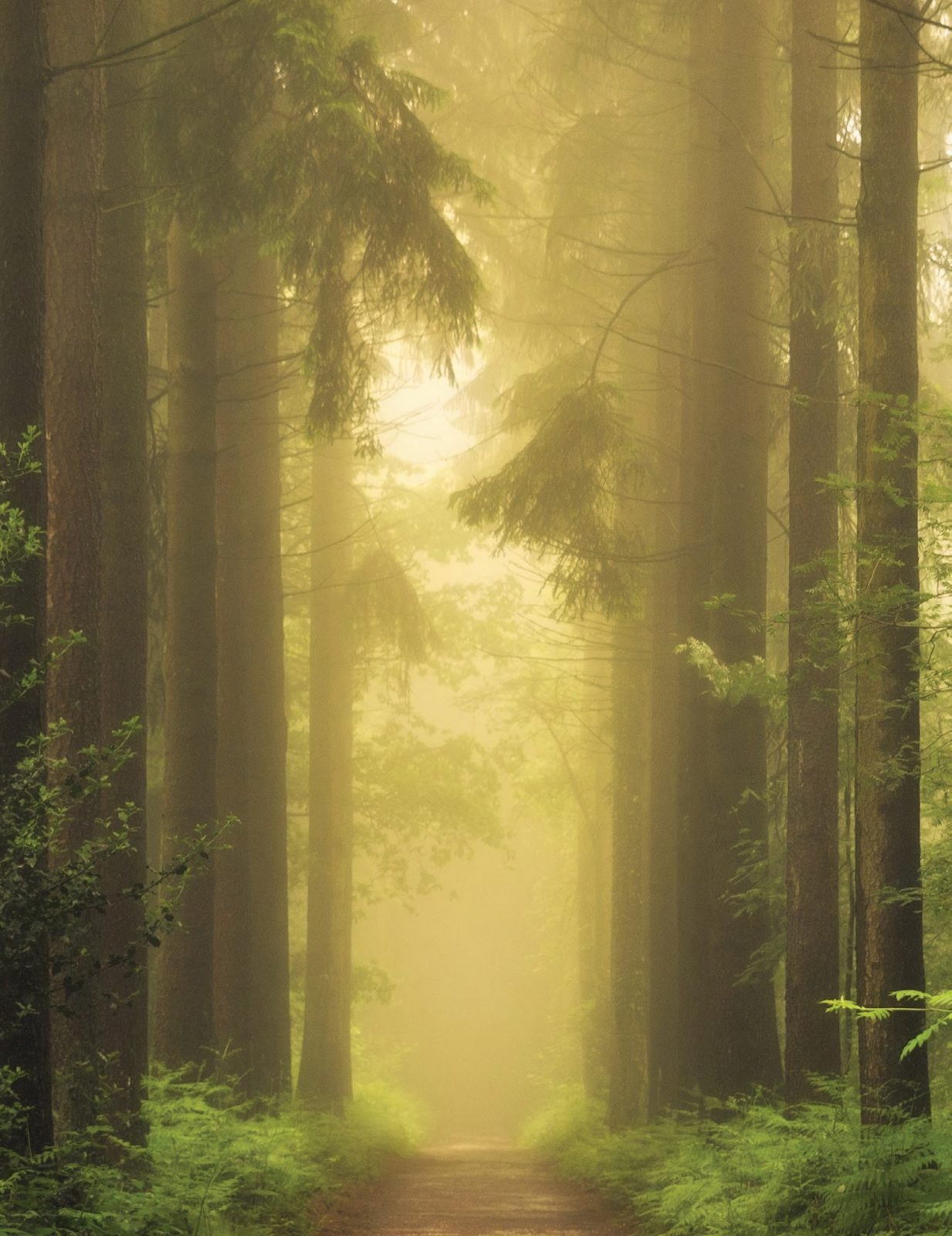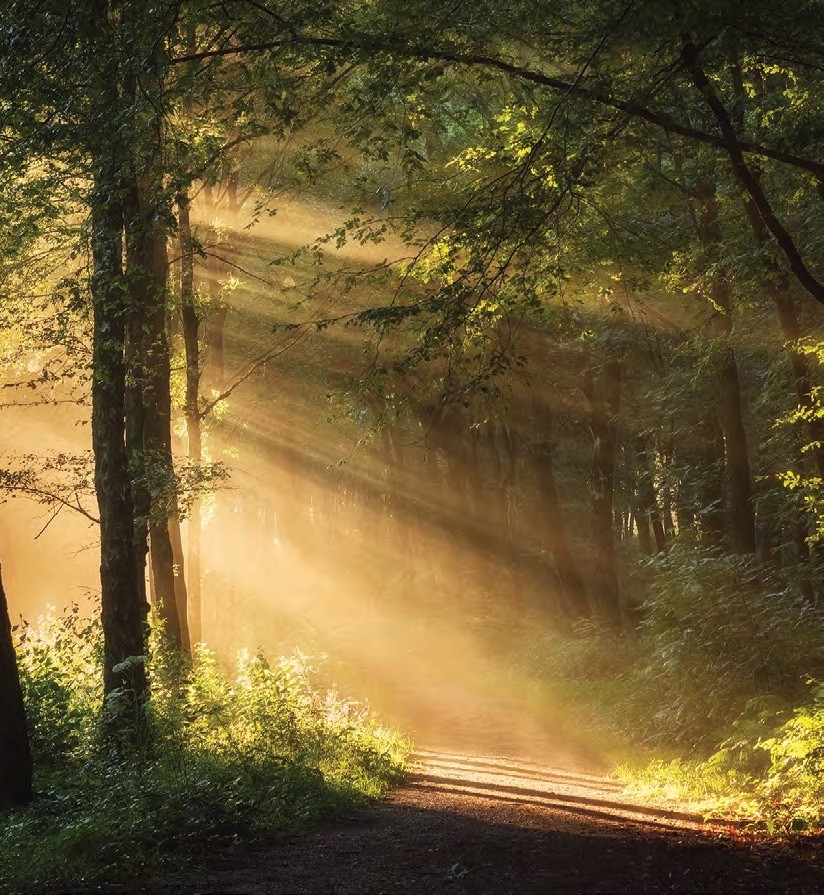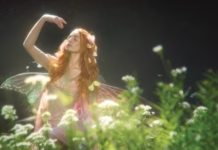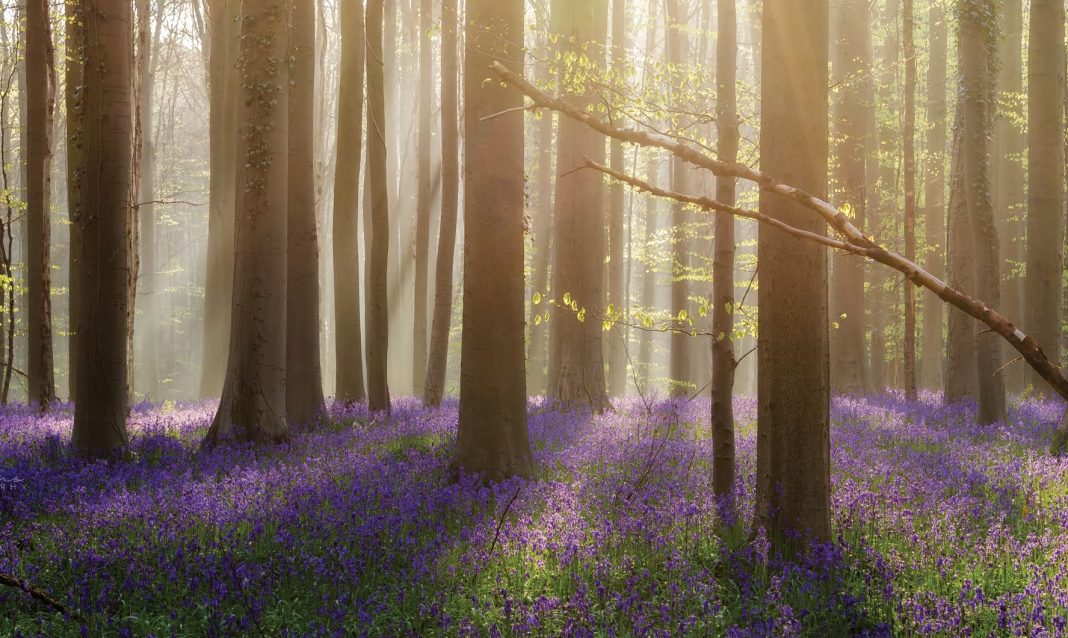Photography by Inge Bovens
 Elves and fairies have long embraced the magic of the forest, living as they do under wild mushrooms and toadstools, on mulchy ground carpeted with spongy moss, near sparkling waterfalls and fresh mountain springs.
Elves and fairies have long embraced the magic of the forest, living as they do under wild mushrooms and toadstools, on mulchy ground carpeted with spongy moss, near sparkling waterfalls and fresh mountain springs.
In recent years, perhaps we humans haven’t quite appreciated that magic, or we wouldn’t abuse nature the way we do. But it seems as if that may be starting to change, as more are drawn to “forest bathing,” or “bathing in nature,” which has nothing to do with water and everything to do with a cleansing of another sort.
Forest bathing is a slow, serene, and thoughtful walk in the woods to connect with nature and refresh the mind and spirit. And now, there are documented physical benefits too. Forest bathing began in Japan, where the term Shinrinyoku translates to “forest bathing” or “taking in the forest atmosphere.” It was coined by the Japanese Ministry of Agriculture, Forestry, and Fisheries in 1982 and integrated into the National Public Health Program there to help improve public health by encouraging leisurely strolls through the forest—believed to offer great physiological benefits.
Japanese researchers conducted field experiments in twenty-four forests across Japan to study those benefits. The first day, six subjects were sent to walk in a forest, and the rest walked in the city. On the second day, they switched. The researchers measured cortisol (the “stress” hormone), heart rate, blood pressure, and pulse before and after each walk. Not surprisingly, results showed that a walk in the woods lowered pulse rates, blood pressure, parasympathetic nerve activity, and cortisol, compared with the city walk. The presence of phytoncides (antimicrobial oils emitted by trees and plants) appears to bolster the human immune system. The results were so striking that a field of research dedicated to “forest medicine” is being developed as a means of preventive medicine and healing. And it’s now catching on in the U.S.
A lifelong city dweller, I have long been drawn to the forest, especially my forest in the city—Central Park. I love to wander the Ramble, a thickly wooded stretch strewn with boulders, branches, and trickling streams. Landscape architect Frederick Law Olmsted designed Central Park and Brooklyn’s Prospect Park with a deep understanding that even in the midst of our cities, we need the wild. Even in the city—especially in the city!—we need to escape. And when I leave New York, there’s a good chance you’ll find me under the forest canopy in some ethereal woodland, breathing the pine-tinged air, feeling the mist and morning dew, the feathery ferns brushing my skin. I am happiest when I see the sun dapple through the branches and speckle the ground in the Amazon Rainforest in Peru, the Humboldt Redwood Forest in California, the Black Forest in Germany, the Monkey Forest in Ubud. The resonating quiet in the forest can be scary, but when you learn to embrace the stillness, you feel its most powerful effect.
Knowing this, I signed on for a “forest bathing walk” with Nina Smiley, the director of mindfulness programming at the Mohonk Mountain House in New Paltz, New York, and author of Mindfulness in Nature. Mohonk, a historic Victorian lodge founded by Albert Smiley, a Quaker, in 1869, has always reminded me of the Overlook Hotel in The Shining—which was actually inspired by the Timberline Lodge in Mount Hood, Oregon. It is a commanding structure, a bit foreboding, but very warm and welcoming at the same time.
The Shawangunk Mountains near Mohonk are covered with thick foliage. As we walked along, silently and companionably in the forest, every once in a while Smiley would remind us to pay attention: “Call on your senses. Allow the spaciousness of nature to become the spaciousness of your mind as you let your thoughts go. Hear the ripple of the wind on the water. Feel the stones, smell the buds in bloom.” Once I let it all sink in and shook off my initial doubts, I could feel my shoulders loosen, my breath slow, and eventually, my perception sharpen.

At Blackberry Farm, near Knoxville, Tennessee, I walked through the lush Smoky Mountains, forest bathing with spa director Amanda Meyers. There I also breathed deeply, focused on the moment, and felt the chatter in my head come to a full stop, while the world looked just a bit brighter and I felt incredibly relaxed and at peace. Walking barefoot in the woods, an experience known as earthing, is also beneficial. Studies have shown that connecting barefoot with the earth allows the body to absorb free electrons from the soil, which act like antioxidants, with healing properties.
Forest bathing is magical and medicinal. The point is to slow down and pay attention, to become attuned to nature. It is not hiking; it is not a workout; it is not striding purposefully toward a two- or four- or eight-mile marker. It is about being mindful, in the moment, feeling the roughness of bark and snapping twigs, inhaling the forest smells, heightening awareness of your surroundings, appreciating nature and absorbing the peace that can be found there. It is cleansing, in a metaphysical way, and offers tangible, physical benefits. It creates the sense that new beginnings are possible as every bud, lichen, and bit of new growth in the forest makes you feel reborn or at least evokes the feeling that you can begin again where you are.
That is, as long as you allow yourself to be mindful, to be aware of the moment, what you touch, what you smell, what you see. There is a magic in mindfulness, after all. Environmentalist Paul Hawken said, “Ralph Waldo Emerson once asked what we would do if the stars only came out once every thousand years. No one would sleep that night, of course. The world would become religious overnight. We would be ecstatic, delirious, made rapturous by the glory of God. Instead the stars come out every night, and we watch television.”
Now perhaps more than ever, we need to slow ourselves down and reflect on the interconnectedness between one another and the living things in our world. I recently read an incredible book, The Hidden Life of Trees, by Peter Wohlleben, a German forester and ecologist. He writes about how trees are ecosystems, communities, maybe even families. They are able to communicate by sending electrical impulses to one another—which can be very slow, especially when the trees are hundreds of years old. Trees can taste the saliva of leaf-eating insects and respond by sending out a self-protective chemical signal that attracts predators to feed on that type of insect. According to Wohlleben, trees even experience something similar to emotions.
“When one tugs at a single thing in nature, one finds it attached to the rest of the world,” the great naturalist John Muir said. We are part of the weave of nature, and we forget that sometimes. But a walk in the woods—forest bathing—brings us back. In order to slow ourselves down, be well, and sustain what we have, we need to take care of nature, and she will care for us in return. And that’s where forest bathing comes in.
See more of Inge Bovens’s work at facebook.com/IngeBovensPhotography.
Follow Rona Berg on Instagram @ronaberg.
































